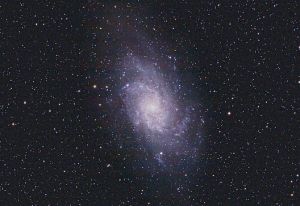|
Advertisement / Annons: |
Astronomy CalculationsContent: |
Max Exposure time on tripod |
|
|
With this tool you can calculate how many pixels a star moves on your sensor along RA axis during one exposure when having the camera on a tripod. For a wide angle lens it will be very different movement along the DEC axis, it calculate movement at center, top and bottom of sensor along DEC axis. With this you find the max exposure time you can have without getting star trails.
|

|
Type in your dataIt start to calculate as soon you change or write new figures in the white or dark red boxes. Do not exceed the maximum number of characters, delete characters if necessary.
Note: |
|
How much can we tolerate that a star move and get an elongated ugly look? It's a bit personal, but with a sharp lens, in center 2 or 3 pixels, at the edges where the lens is softer maybe a bit more.
|
| Go Back |